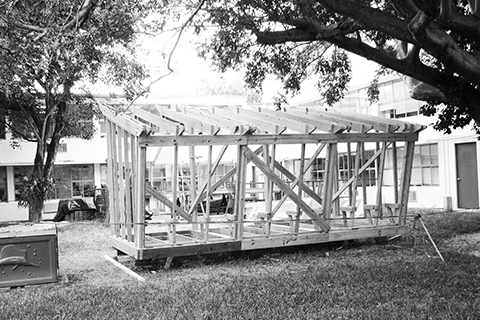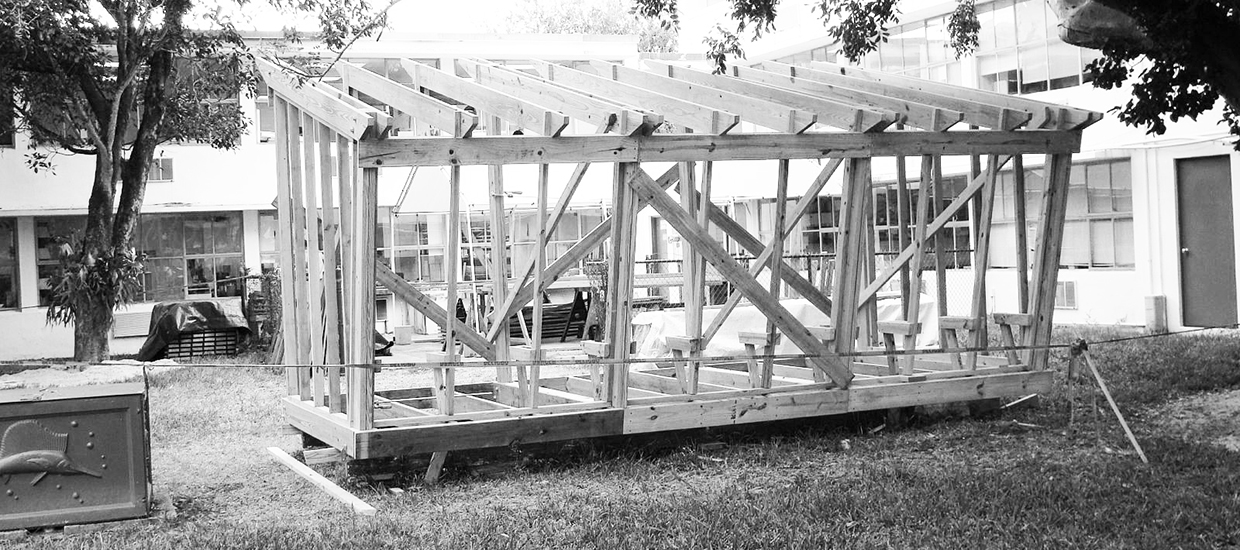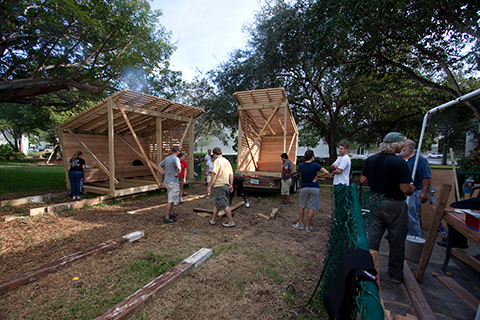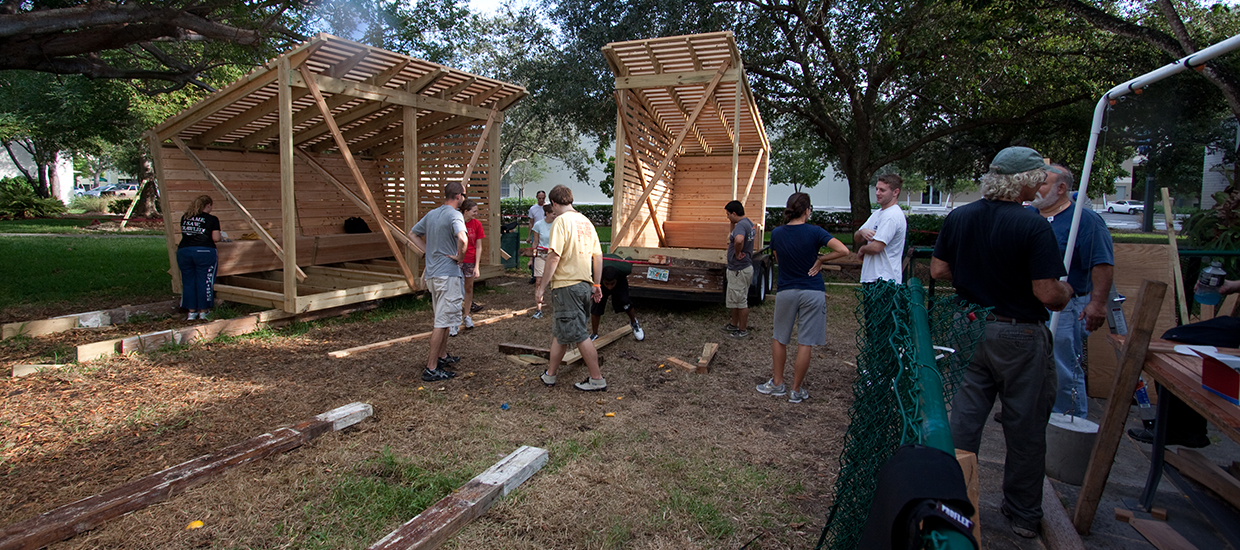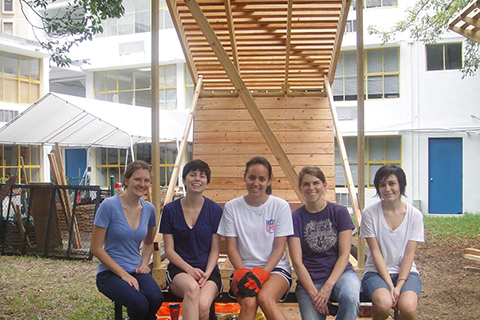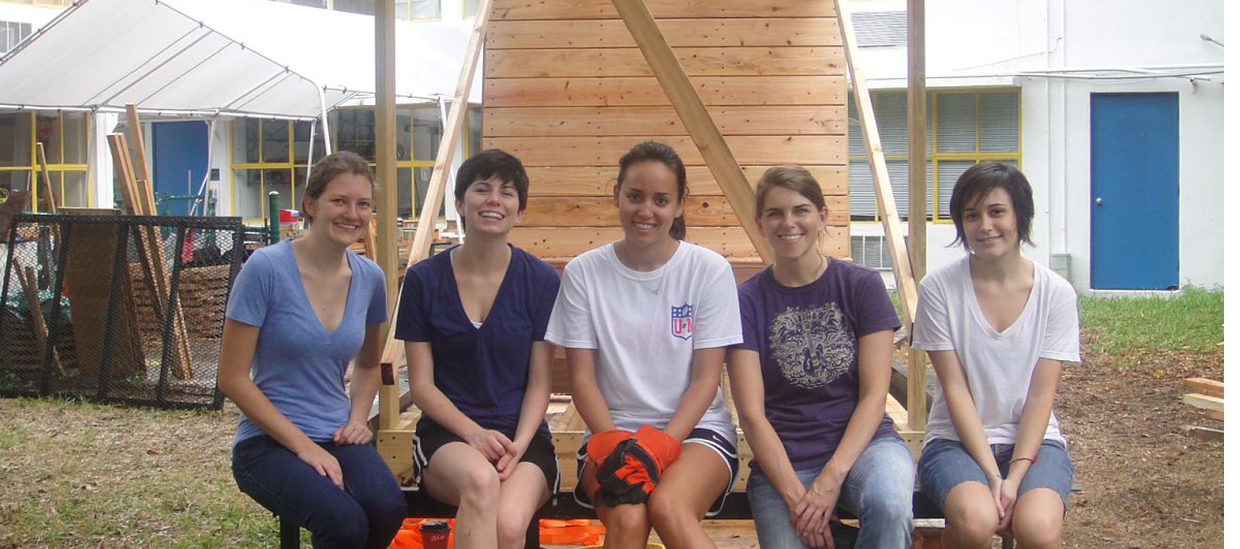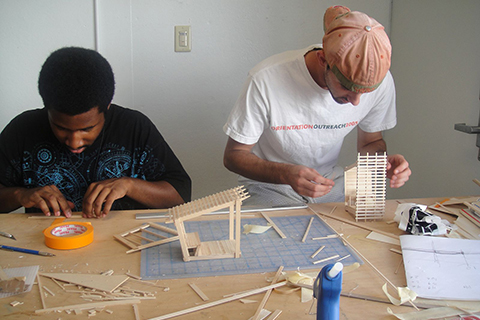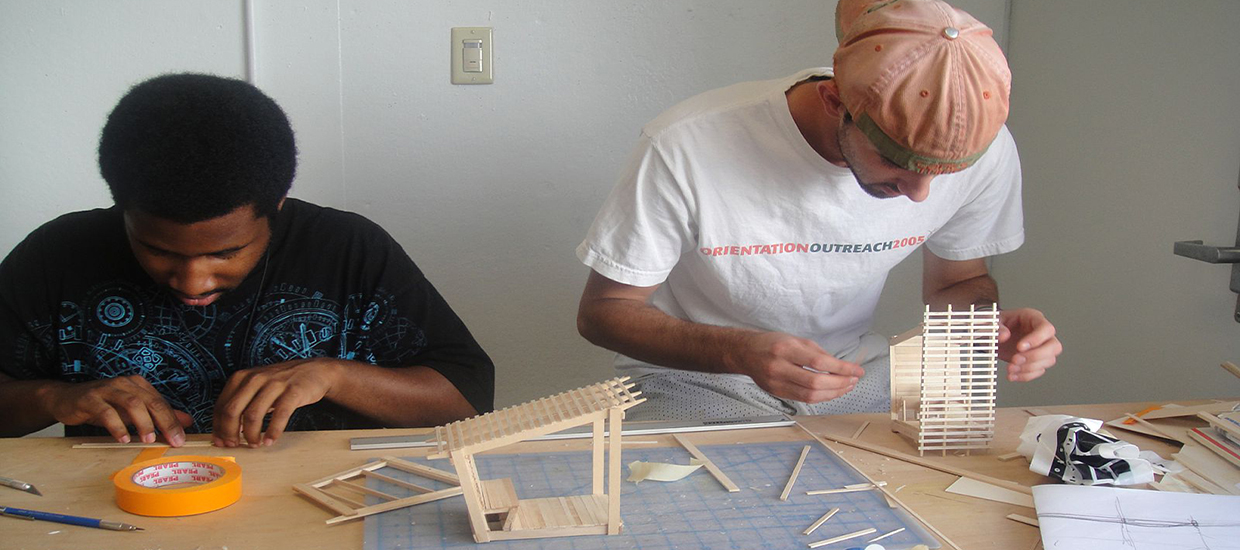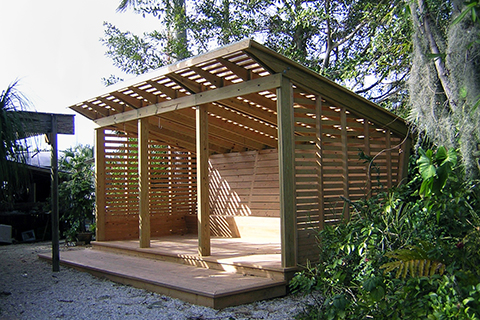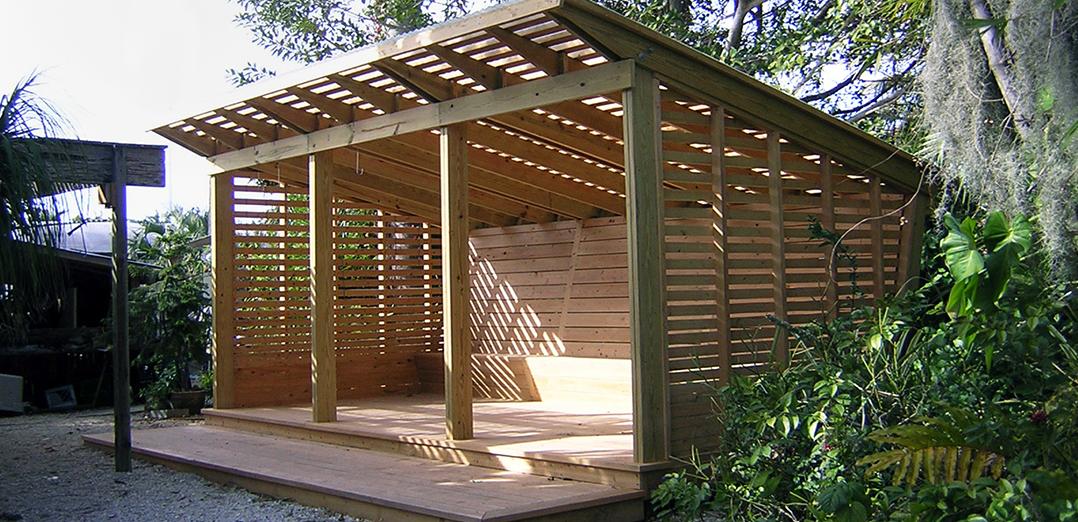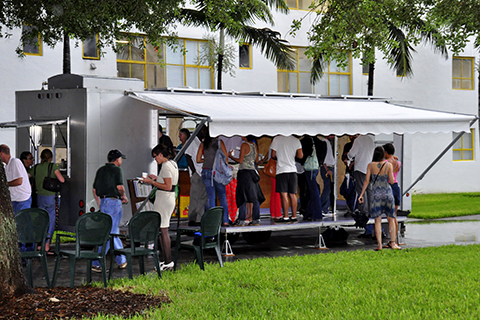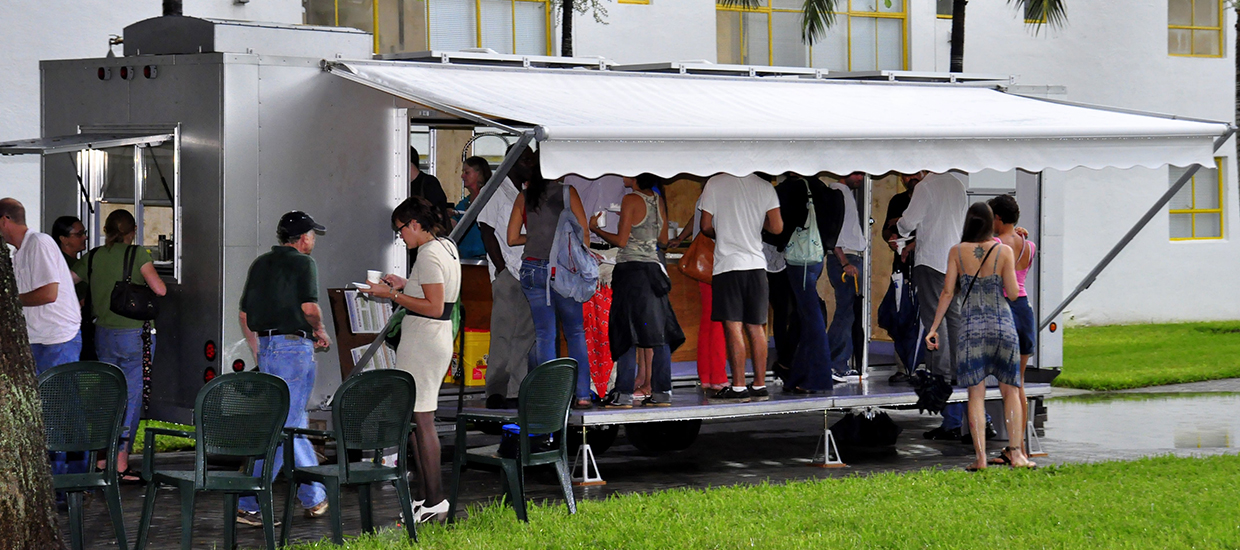Dr. Martin Motes and his wife Mary, operate Motes Orchids Inc., a nursery that specializes in Vandas and
allied genera, species, hybrids and intergenerics. Their world-renowned nursery is located in the sub-tropical agricultural community in Miami-Dade County known as Redland. As published authors, both Martin and Mary Motes have been instrumental in expanding the public’s knowledge of orchid propagation. The project, as proposed by the owners, was to create a small structure to replace an existing temporary structure.
Located in the heart of Redland just south of two popular landmarks, the historic Redland School and Knaus Berry Farm, the Motes property is a five-acre plot along 162nd Avenue. The site is a sequence of contrasts starting with a dense, dark hardwood hammock concealing an early wood frame house and remnants of an old avocado grove, to a light-filled open green that leads to the shade houses in which filtered light and controlled humidity create the perfect growing conditions for the luxurious Vandas that are displayed within. The project site is located in a gap between the open green and a long Cypress wood pergola that connects the visitor to the shade houses. The built pavilion is therefore visible from the green and is the first (and last) structure the public sees when visiting the site.
The design of the project was accomplished in a series of short 30-minute to one-hour charrettes of teams of students whose membership was constantly changing.
This scramble technique allowed for many ideas to surface without any one group or person controlling the direction of the design. The final design was therefore, by virtue of this approach by consensus. From these rough sketches, the final design was developed in drawing and model form in order to detail connections, accurately size members and estimate costs.
Model making was the final step in the process before construction. Making a large one-inch to one-foot model provided a scaled down version of the larger project. If the model could be successfully built, more than likely, so could the full-scale building. Pieces were cut to size and questions of assembly were discussed. The model helped estimate the number of pieces needed as well as how it could be assembled. The model could be pushed and pulled to simulate live loads, testing the building’s ability to resist such forces. In addition to the model’s ability to bring us closer to construction, it was an essential tool to convey design ideas to the client. Drawings then performed a variety of roles: to show the client specific dimensional characteristics of the building, to build the model, and finally, to do material take offs to determine the number of members, fasteners, and amounts of materials needed to construct the building.
The new pavilion serves as an informal check-out area and place of rest for customers visiting the nursery. Built of cypress wood, the new structure is compatible with the existing Cypress trellis entrance, running perpendicular to the vaulted shade houses. The limited program and the owner’s specific material request inspired a solution that combines the shade house program with needed site furniture. Ultimately the new pavilion provides a place for informal gatherings, small classes, and a place out of the rain that can house a desk and display area for books, orchids and orchid products. Modular in design, the project was built at
the School of Architecture as three separate units in order to be small enough to be transported to the site. The students’ final design borrows heavily from the material palette of the shade houses and pergola it abuts. Modular, well ventilated, and of permanent materials that will age well, the new structure also offers a place for visitors to just sit and enjoy being in the country while admiring one of its products.
Client: Dr. Martin Motes & Mrs. Mary Motes
Students: Claudia Acuna, Luna Bernfest, Eric Brown, Aramis Camacho, Jessica Corter, Amanda Del Rio, Robert Douglas, Melissa Harrison, Billy King, Tony Kuo, Ralph Provisero, Jessica Rausch, Lamar Rollins, Courtney Webster
Faculty: Jim Adamson, Rocco Ceo



